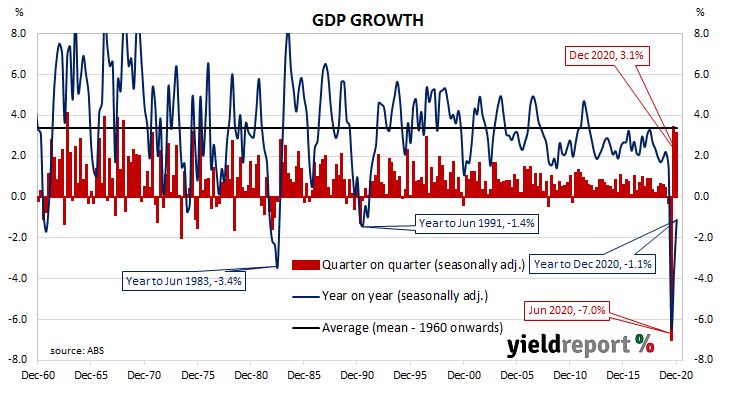Summary: GDP up strongly in December quarter, better than expected; economy still 1.1% smaller than December 2019; “continued evidence of Australia’s bounce back”; economy continues recovery despite declining fiscal stimulus; household consumption spending up strongly, contributes bulk of rise; spending linked to reopening.
Since the “recession we had to have” as the recession of 1990/91 became known, Australia’s GDP growth has been consistently positive, with only the odd negative quarter here and there. However, Australia’s first recession in nearly thirty years was inevitable in 2020 once governments introduced restrictions which shut businesses and limited people’s movements for an extended period of time. A return to growth was widely expected once restrictions were eased across much of the country in the September quarter.
Figures released by the ABS indicate GDP expanded by 3.1% over the December quarter. It was a better result than the 2.5% rise which had been generally expected but not quite as strong as the September quarter’s 3.4%. However, on an annual basis, GDP still contracted by 1.1%, although this was better than the September quarter’s comparable figure of -3.7% after revisions.
“The December quarter National Accounts showed continued evidence of Australia’s bounce back from the pandemic-induced recession in the first half of 2020,” said Westpac chief economist Bill Evans.

ANZ senior economist Felicity Emmett said “the key message…is that the economy continued to recover strongly, despite the withdrawal of a large chunk of fiscal stimulus, which drove a sharp drop in profits in the quarter and a significant decline in the household saving rate.” She said the lower savings rate reflected “ongoing strong consumption growth and a sharp fall in household income”. However, profits and household income both remained “well above pre-pandemic levels…”

